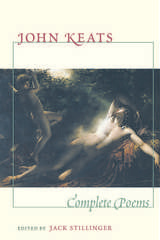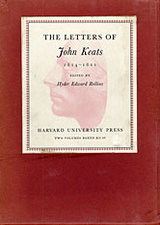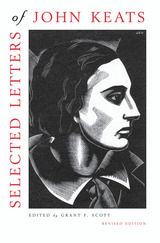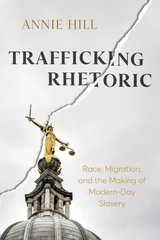
Here is the first reliable edition of John Keats’s complete poems designed expressly for general readers and students.
Upon its publication in 1978, Jack Stillinger’s The Poems of John Keats won exceptionally high praise: “The definitive Keats,” proclaimed The New Republic—“An authoritative edition embodying the readings the poet himself most probably intended, prepared by the leading scholar in Keats textual studies.”
Now this scholarship is at last available in a graceful, clear format designed to introduce students and general readers to the “real” Keats. In place of the textual apparatus that was essential to scholars, Stillinger here provides helpful explanatory notes. These notes give dates of composition, identify quotations and allusions, gloss names and words not included in the ordinary desk dictionary, and refer the reader to the best critical interpretations of the poems. The new introduction provides central facts about Keats’s life and career, describes the themes of his best work, and speculates on the causes of his greatness.

After more than a century of study, we know more about John Keats than we do about most writers of the past, but we still cannot fully grasp the magical processes by which he created some of the most celebrated poems in all of English literature. This volume, containing 140 photographs of Keats’s own manuscripts, offers the most concrete evidence we have of the way in which his thoughts and feelings were transmuted into art.
The rough first drafts in particular are full of information about what occurred, if not in Keats’s mind, at least on paper when he had pen in hand: the headlong rush of ideas coming so fast that he had no time to punctuate or even form the letters of his words; the stumbling places where he had to begin again several times before the words resumed their flow; the efforts to integrate story, character, and theme with the formal requirements of rhyme and meter. Each revision teaches the inquiring reader something about Keats’s poetic practice.
Several of the manuscripts are unique authoritative sources, while others constitute our best texts among multiple existing versions. They reveal much about the maturation of the poet’s creativity during four years of his brief life, between “On Receiving a Curious Shell” (1815) and “To Autumn” (1819). Above all, they show us what is lost when penmanship yields to the printed page: what Helen Vendler, in her insightful essay on the manuscripts, calls “the living hand of Keats.” These sharply reproduced facsimiles provide compelling visual evidence of a mortal author in the act of composing immortal works.

For many years one of the most serious needs in the literary world has been for a definitive edition of the letters of Keats. Now one of the world's foremost Keats authorities, Hyder Edward Rollins of Harvard, has prepared a completely new edition of all the extant letters, with an extensive listing of the letters presumed missing.
With impeccable scholarship and total faithfulness to the originals, Professor Rollins here is able to redate and rearrange sixty of the letters. Through full documentation for each letter, understanding of the content is considerably amplified both through the correction of errors, and through application of the results of the editor's life-long study of Keats and his work. In addition to many letters from Keats' relatives and friends, the present work includes seven letters or other documents signed or written by Keats that appear in no English edition, and also new texts of seven other letters by the poet. Furthermore, all the letters known only in Woodhouse's transcripts and in Jeffrey's transcripts are here printed for the first time exactly as Woodhouse and Jeffrey copied them.
The letters of Joseph Severn describing the last illness and death of Keats are given in their entirety. These letters are invaluable historically and biographically, and are also exceptionally good reading.

For many years one of the most serious needs in the literary world has been for a definitive edition of the letters of Keats. Now one of the world's foremost Keats authorities, Hyder Edward Rollins of Harvard, has prepared a completely new edition of all the extant letters, with an extensive listing of the letters presumed missing.
With impeccable scholarship and total faithfulness to the originals, Professor Rollins here is able to redate and rearrange sixty of the letters. Through full documentation for each letter, understanding of the content is considerably amplified both through the correction of errors, and through application of the results of the editor's life-long study of Keats and his work. In addition to many letters from Keats' relatives and friends, the present work includes seven letters or other documents signed or written by Keats that appear in no English edition, and also new texts of seven other letters by the poet. Furthermore, all the letters known only in Woodhouse's transcripts and in Jeffrey's transcripts are here printed for the first time exactly as Woodhouse and Jeffrey copied them.
The letters of Joseph Severn describing the last illness and death of Keats are given in their entirety. These letters are invaluable historically and biographically, and are also exceptionally good reading.

Here at last is the definitive Keats—an edition of John Keats’s poems that embodies the readings the poet himself most probably intended. The culmination of a tradition of literary and textual scholarship, it is the work of the one scholar best qualified to do the job.
Largely because of the wealth and complexity of the manuscript materials and the frequency with which first printings were based on inferior sources, there has never been a thoroughly reliable edition of Keats. Indeed, in The Texts of Keats’s Poems Jack Stillinger demonstrated that fully one third of the poems as printed in current standard editions contain substantive errors. This edition is the first in the history of Keats scholarship to be based on a systematic investigation of the transmission of the texts. The readings given here represent in each case, as exactly as can be determined, the version that Keats preferred. The chronological arrangement of the poems and the full record of variants and manuscript alterations (presented in a style that will be clear to the general reader as well as useful to the scholar) display the development of Keats’s poetic artistry. Notes at the back provide dates of composition, relate extant manuscripts and early printings, and explain the choices of texts.
The London Times said of Stillinger’s earlier study of the texts: “Thanks to Mr. Stillinger a revolution in Keats studies is at hand.” Here is the crucial step in that revolution.

The letters of John Keats are, T. S. Eliot remarked, "what letters ought to be; the fine things come in unexpectedly, neither introduced nor shown out, but between trifle and trifle." This new edition, which features four rediscovered letters, three of which are being published here for the first time, affords readers the pleasure of the poet's "trifles" as well as the surprise of his most famous ideas emerging unpredictably.
Unlike other editions, this selection includes letters to Keats and among his friends, lending greater perspective to an epistolary portrait of the poet. It also offers a revealing look at his "posthumous existence," the period of Keats's illness in Italy, painstakingly recorded in a series of moving letters by Keats's deathbed companion, Joseph Severn. Other letters by Dr. James Clark, Percy Bysshe Shelley, and Richard Woodhouse--omitted from other selections of Keats's letters--offer valuable additional testimony concerning Keats the man.
Edited for greater readability, with annotations reduced and punctuation and spelling judiciously modernized, this selection recreates the spontaneity with which these letters were originally written.
READERS
Browse our collection.
PUBLISHERS
See BiblioVault's publisher services.
STUDENT SERVICES
Files for college accessibility offices.
UChicago Accessibility Resources
home | accessibility | search | about | contact us
BiblioVault ® 2001 - 2024
The University of Chicago Press









